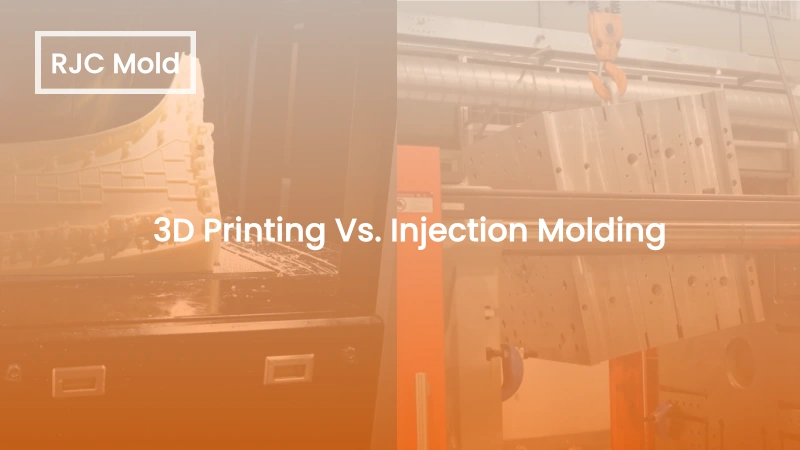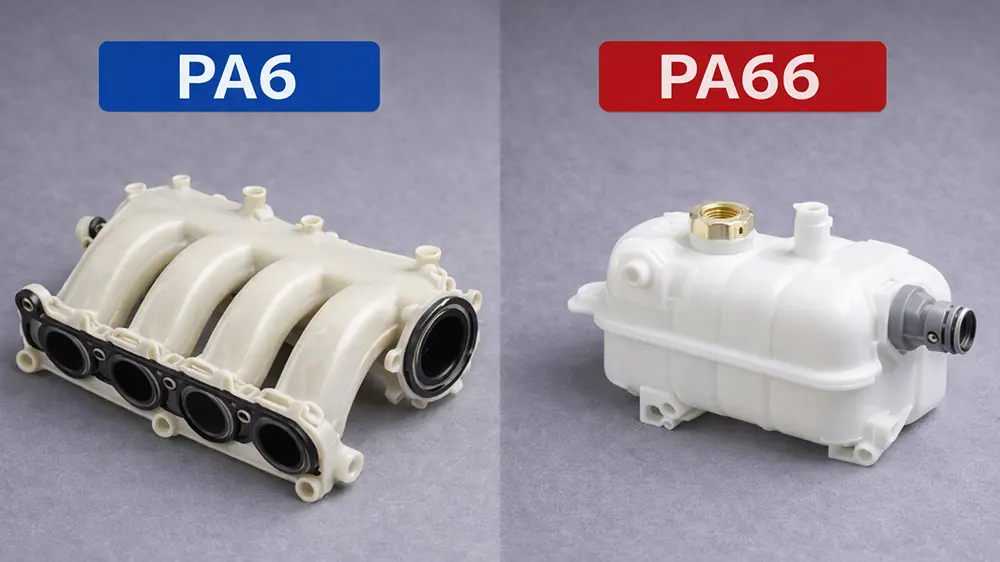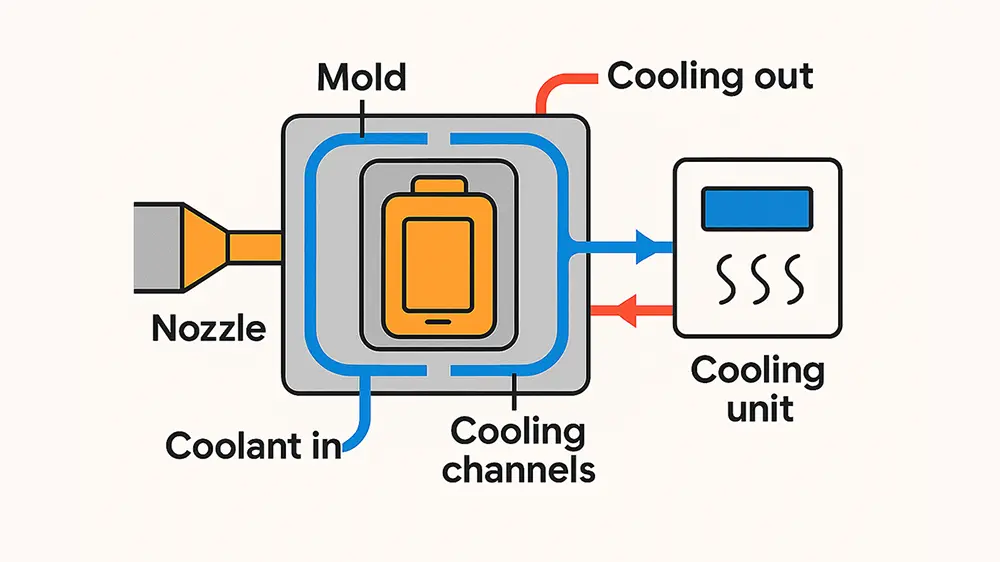
The main difference between 3D printing and injection molding lies in flexibility versus batch cost trade-offs. 3D printing doesn’t need molds, which makes it ideal for rapid prototyping or creating parts with complex structures. On the other hand, injection molding requires an upfront investment in molds. Once that’s done, it’s perfect for large-volume production, offering lower per-unit cost and excellent performance.
In this article, we’ll break down these two manufacturing methods across cost, production cycle, materials and performance, design flexibility, and application scenarios. By the end, engineers, designers, and procurement professionals will have a clearer picture of which method fits their project needs.
Cost Comparison — Small Batches Favor 3D Printing, Large Batches Favor Injection Molding
Cost is often the first thing on people’s minds when choosing a manufacturing method.
With 3D printing, there’s no need for mold investment. That means if you’re making just a handful of parts, the main cost is the material and printing time. So, producing a small number of components can be done quickly without piling on extra costs. Injection molding, in contrast, requires designing and fabricating a mold upfront. That can be expensive. However, once you start producing hundreds or thousands of parts, the mold cost is spread out, bringing the per-unit price down significantly.
| Dimension | 3D Printing | Injection Molding |
|---|---|---|
| Per-unit cost | Low for small batches | Low for large volumes |
| Mold cost | None | High, amortized per unit |
| Suitable batch size | 1–100 parts | 1,000+ parts |
For example, if you only need about 10 parts, 3D printing is often cheaper because you don’t have to invest in a mold. But once production reaches 10,000 units or more, injection molding can bring the cost per part below $1, whereas 3D printing might still cost $10–$50 per part.
So, for projects with frequent iterations or small batches, 3D printing saves upfront costs. If you’re going big, injection molding is usually more economical.
Also you may interested in this article: Understand the Cost of Injection Molding
Production Cycle — Quick Iterations with 3D Printing, Fast Mass Production with Injection Molding
Another crucial factor is time—how long it takes to get from design to finished part.
3D printing can often produce parts in hours or a few days, which is perfect if you want to test designs quickly or iterate multiple times. Injection molding, however, requires mold design and fabrication first, which usually takes 2–6 weeks. But here’s the trade-off: once the mold is ready, producing each part is extremely fast.
Take a complex component as an example. Using 3D printing, you could have a prototype in 24–48 hours. With injection molding, the mold might take 2–4 weeks to make—but after that, each part comes off the line in just 30–60 seconds.
In short, 3D printing is ideal for prototypes and small-batch trials, while injection molding shines when you need fast, high-volume production.
Materials and Performance — Injection Molding for Strength, 3D Printing for Flexibility
Material choice and part performance often decide which manufacturing method to use.
Injection molding supports a wide range of plastics and thermosets, producing parts that are strong, durable, and suitable for functional applications. 3D printing materials are more limited, but you can achieve complex shapes and lightweight designs, which is great for non-structural parts or low-volume functional components.
| Performance | 3D Printing | Injection Molding |
|---|---|---|
| Material options | Thermoplastics, photopolymers, some metals | Hundreds of plastics, thermosets, some metals |
| Strength & durability | Medium, good for non-structural parts | High, good for functional parts |
| Surface finish | Moderate, usually requires post-processing | Smooth, ready for production |
| Temperature resistance | Limited (<200℃) | High, can use PEEK or PPS (>250℃) |
For instance, if you need a high-temperature part for automotive or industrial use, injection molding can handle PEEK or PPS directly. Common 3D printing materials like ABS or photopolymers may struggle in terms of strength and heat resistance.
So, for high-strength, durable, or high-temperature parts, injection molding is usually the way to go. For prototypes or complex geometries, 3D printing tends to be more convenient.
Design Flexibility and Complexity — 3D Printing Excels at Complicated Structures
Design complexity can make or break the feasibility and cost of manufacturing.
3D printing doesn’t rely on molds, so it can easily produce intricate geometries, internal cavities, or lightweight lattice structures. Injection molding, however, requires careful mold design. Complex features often mean more expensive molds and longer lead times.
Consider a part with internal supports or a honeycomb structure. With 3D printing, it can come out in one piece. With injection molding, you’d need slides or parting surfaces, which increases mold cost and extends delivery time.
For projects with multiple design iterations or geometrically complex parts, 3D printing can reduce both development risk and cost.
Application Scenarios — Choosing the Right Manufacturing Method
Different use cases naturally favor different manufacturing methods.
3D printing works best for rapid prototypes, small batch functional parts, and complex shapes. Injection molding is ideal for large-volume production, functional components, and durable parts.
| Scenario | Recommended Method | Why |
|---|---|---|
| Rapid prototyping | 3D Printing | Samples in 24–48 hours, low-cost iteration |
| Small batch functional parts | 3D Printing / Injection Molding | Balance flexibility and cost |
| Large-volume production | Injection Molding | Low per-unit cost, wide material selection |
| Complex geometry parts | 3D Printing | Supports intricate shapes, no mold needed |
By considering batch size, cost, performance, and design complexity, you can choose the method that maximizes efficiency and minimizes development risk.
Emerging Trends in Hybrid and Smart Manufacturing
In recent years, more manufacturers are combining 3D printing and injection molding into a hybrid approach. For example, 3D printing can be used to quickly produce injection molds or short-run parts, and then large-volume production can shift to injection molding. This allows for fast design validation while maintaining high efficiency in mass production.
Meanwhile, the range of 3D printing materials has expanded rapidly. High-performance composites, metals, and biocompatible materials now allow 3D printed parts to achieve functional and mechanical properties that rival or even surpass traditional injection-molded components.
On the technology side, AI, machine learning, and IoT are driving smarter production. Injection molding can now collect real-time data to optimize parameters, predict maintenance, and reduce waste, improving quality across the board. Similarly, AI-assisted 3D printing optimizes print paths and designs, allowing parts to meet quality standards, which significantly reduces post-processing time.
Looking Beyond 3D Printing and Injection Molding
Of course, 3D printing and injection molding aren’t your only options. Depending on your project, you might also consider CNC machining or vacuum casting, which can be faster for certain applications. RJC Mold provides comprehensive manufacturing services and tailored solutions for each project. Contact us today for a professional evaluation and customized quote, ensuring your parts move efficiently and reliably from design to finished product.





